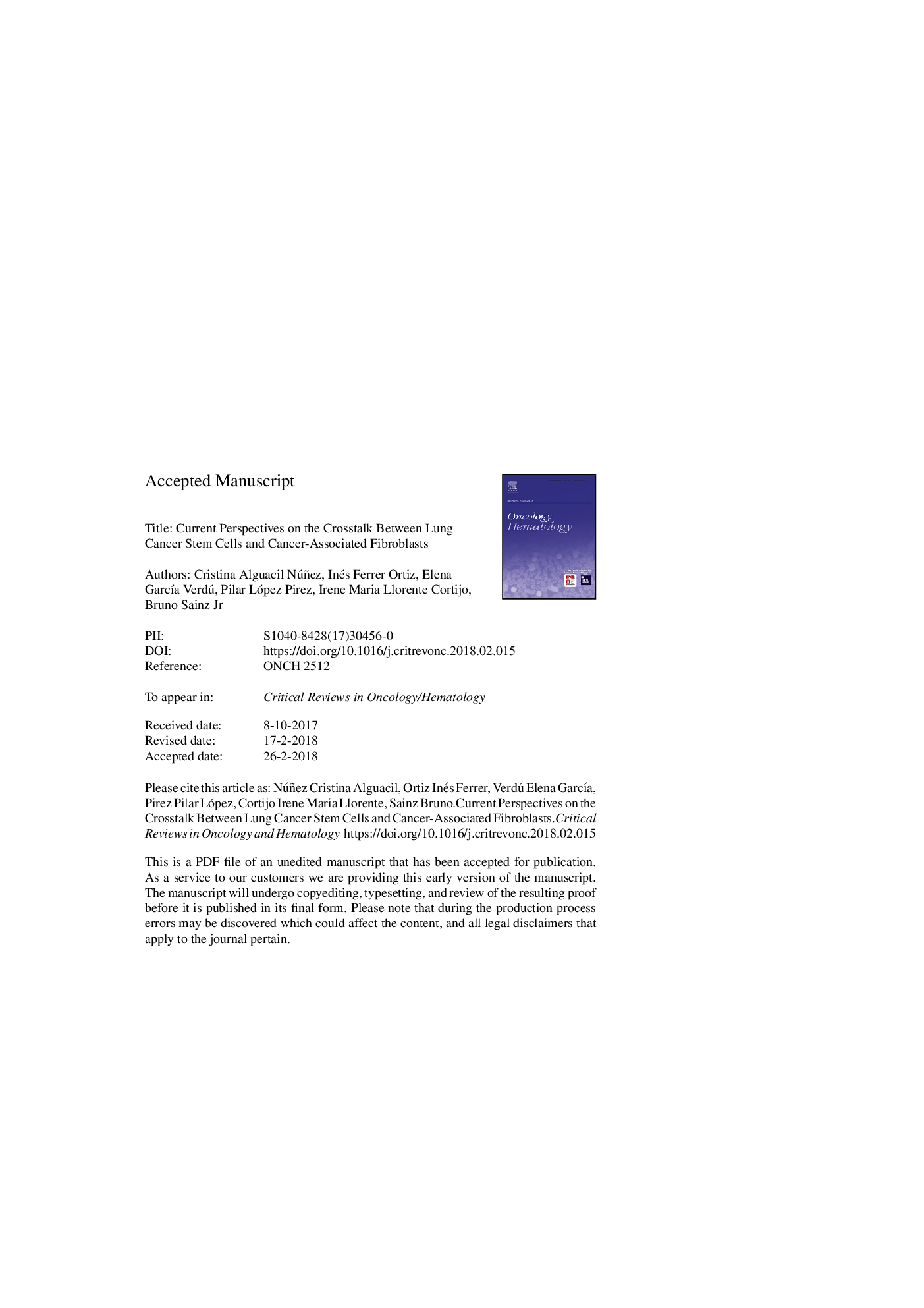| Article ID | Journal | Published Year | Pages | File Type |
|---|---|---|---|---|
| 8733657 | Critical Reviews in Oncology/Hematology | 2018 | 34 Pages |
Abstract
Lung cancer, in particular non-small cell lung carcinoma (NSCLC), is the second most common cancer in both men and women and the leading cause of cancer-related deaths worldwide. Its prognosis and diagnosis are determined by several driver mutations and diverse risk factors (e.g. smoking). While immunotherapy has proven effective in some patients, treatment of NSCLC using conventional chemotherapy is largely ineffective. The latter is believed to be due to the existence of a subpopulation of stem-like, highly tumorigenic and chemoresistant cells within the tumor population known as cancer stem cells (CSC). To complicate the situation, CSCs interact with the tumor microenvironment, which include cancer-associated fibroblasts (CAFs), immune cells, endothelial cells, growth factors, cytokines and connective tissue components, which via a dynamic crosstalk, composed of proteins and exosomes, activates the CSC compartment. In this review, we analyze the crosstalk between CSCs and CAFs, the primary component of the NSCLC microenvironment, at the molecular and extracellular level and contemplate therapies to disrupt this communication.
Keywords
CSCEGFRHGFMSCSDF-1CAFKRASIGFALKExosomesEMTHedgehogColorectal cancerLung cancerNSCLCNon-small cell lung cancerMesenchymal stem cellcancer stem cellCancer stem cellsHepatocyte growth factorstromal cell-derived factor 1Insulin-like growth factorCancer-associated fibroblastscancer-associated fibroblastAnaplastic lymphoma kinaseMicroenvironmentnon-small cell lung carcinomaCRCepithelial-to-mesenchymal transitionEpidermal growth factor receptor
Related Topics
Health Sciences
Medicine and Dentistry
Hematology
Authors
Cristina Alguacil-Núñez, Inés Ferrer-Ortiz, Elena GarcÃa-Verdú, Pilar López- Pirez, Irene Maria Llorente-Cortijo, Bruno Jr,
